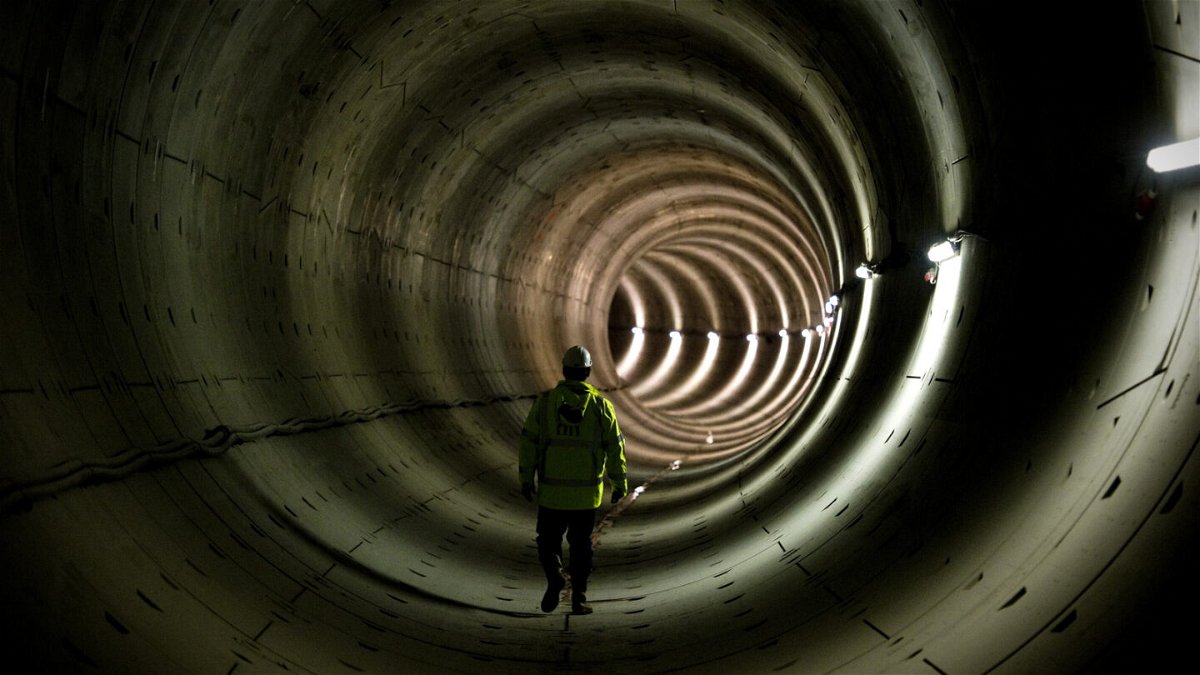Amsterdam’s train tunnels reveal surprising windows into the past

A worker stands in the tunnel of the North-South subway line in Amsterdam on January 16
By Ashley Strickland, CNN
Scientists have long believed our planet is built upon four layers of rocks, minerals and magma deposited over millions of years of existence.
But researchers now think the world has five major layers after discovering a previously undetectable 400-mile-wide ball of iron inside Earth’s inner core. The revelation could help experts understand more about the origins of the place we call home.
And then there are the hidden layers of history beneath our feet — roads, cities and ways of life that have been covered over and forgotten with the passage of time.
As we dig down into those lost chapters, stories have a way of coming to life again.
Unearthed
When engineers tunneled beneath Amsterdam’s centuries-old architecture to build the North-South metro line, it was like stepping back in time.
The arduous 15-year operation resulted in a subterranean train system — and an underground museum filled with 10,000 artifacts uncovered during the process.
Archaeologists sorted through the mud displaced during the project and found myriad objects, including 115,000-year-old shells, medieval relics and even vintage cell phones.
Visitors can see items on display at Rokin station, where many of the artifacts revealing Amsterdam’s past were found.
Curiosities
A bell-shaped fungus that humans have used as a fire starter for centuries could now prove useful in the fight against the climate crisis.
The hardy organism, nicknamed “tinder fungus,” might one day replace some plastics.
Part of the fungus has a strength similar to plywood or leather, but it weighs less than either one.
Scientists think the fungus could end up as shock absorbers in sporting equipment and other consumer goods.
For ideas on how to minimize your role in the climate crisis, sign up for CNN’s Life, But Greener limited newsletter series.
Other worlds
Astronomers have spotted a “forbidden” planet beyond our solar system.
The exoplanet, called TOI 5205b, is about the size of Jupiter, Earth’s largest planetary neighbor. The unusual world was discovered orbiting a small, cool star with just a fraction of our sun’s light, size and warmth.
Researchers don’t understand how such a large planet came to exist around the minuscule star, hence its forbidden existence. But the gas giant is causing scientists to question what they know about how planets form.
Meanwhile, scientists found an ancient riverbed in Earth’s oldest, driest desert that is surprisingly similar to Jezero Crater on Mars.
A long time ago
The tomb of two brothers who lived during the Bronze Age more than 3,000 years ago may help shed light on some of history’s medical mysteries.
The brothers, likely of high status, lived in the city of Megiddo in what’s now Israel. Both men had debilitating chronic diseases, according to a new analysis of their remains.
Sometime after the younger man died, his older sibling underwent an operation. A square-shaped hole was cut into his skull, and he died not long afterward. Now, a research team is puzzling over the ancient brain surgery and why the skull pieces were buried in the grave.
In a discovery from even further back in time, archaeologists excavating a cave in southern France found the oldest evidence of bow and arrow use by early modern humans outside Africa.
Fantastic creatures
Tiny white huts springing up on the beaches of South Africa and its coastal islands are a little small for human vacationers — but the dwellings are just right for another type of avid beachgoer.
The domes have many selling points — they’re well ventilated and offer a great view of the sea. And above all, the structures provide a safe place for breeding penguins to mate and protect their eggs.
Human activity and the climate crisis have caused the African penguin population to drop. That’s why conservationists with the African Penguin Nest Project stepped in to create artificial nests.
The project began in 2018. Within minutes, the endangered penguins ran straight inside their new homes.
Discoveries
You have to see these stories to believe them:
— The James Webb Space Telescope’s latest image includes six massive galaxies far, far away that are overturning how scientists understand the beginning of the universe.
— A photographer dived to the murky depths of Tasmania’s Derwent River and captured stunning images of a fish that walks on its “hands.”
— A 2,400-year-old mechanism uncovered among ancient palace ruins in Xi’an, China, might be the world’s oldest known flush toilet.
The-CNN-Wire
™ & © 2023 Cable News Network, Inc., a Warner Bros. Discovery Company. All rights reserved.
Like what you’ve read? Oh, but there’s more. Sign up here to receive in your inbox the next edition of Wonder Theory, brought to you by CNN Space and Science writers Ashley Strickland and Katie Hunt. They find wonder in planets beyond our solar system and discoveries from the ancient world.